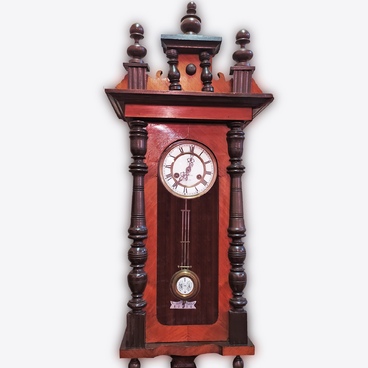The fascinating history of the Abrikósov family began with the serf Stepán, who at the beginning of the 19th century belonged to the Pénza landowner Levashóv. Stepán produced a very tasty apricot marshmallow candy, and the lady of the house, Anna Petróvna, allowed him to go to Moscow to work. Being an excellent pastry chef, the serf managed to get rich quickly and with the money he earned, he could buy freedom for his family. In 1814, in memory of his first success, Stepán took the surname Abrikósov, or ‘apricot’.
Abrikósov developed the confectionery business together with his son Ivan, but despite the hard work, the company ran into debt. Ivan had to pull his 14-year-old son Alexey out of school in order to send him to work for the famous pastry chef Ivan Hoffman. This step became fateful: Alexey turned out to be an extremely talented pastry chef and merchant himself. Having inherited the dying business of his father and grandfather, he managed to turn it into a vast production.
Alexei Abrikósov had 22 children, and four of them were involved in the family business. Thus, in 1880 the factory, which had a huge annual turnover of two million rubles, was renamed as ‘Partnership of A. I. Abrikósov and Sons’. In 1899, the confectionary was awarded the title of Supplier to the Court of His Imperial Majesty, and before the 1917 revolution they expanded their raw material base, engaged in charity work, and conducted experimentation to create new products.
Alexey Abrikósov understood the importance of advertising, so a fifth of his factory’s expenses were dedicated to promotion. He created his own packaging workshop and hired the famous artist Fyódor Shemyátkin to design boxes and jars of sweets. The packaging, made by order of the “Partnership of A. I. Abrikósov and Sons”, very clearly was in line with the modernist direction, which at the time was actively spreading through Russian industrial design. Many artists from the association “World of Art” were then engaged in the development of labels for famous trading houses.
In Abrikósov’s stores, customers were presented with pocket calendars for certain purchases. Gifts for children were hidden inside chocolate eggs — paper toys, postcards, mosaics. The packages were made in a recognisable series so that buyers could collect them. One day an ad appeared in the newspaper that only blondes were working in one shop of the factory, and only brunettes in another. Many townspeople went to check if this was true, simultaneously buying candies and other sweets.
Abrikósov developed the confectionery business together with his son Ivan, but despite the hard work, the company ran into debt. Ivan had to pull his 14-year-old son Alexey out of school in order to send him to work for the famous pastry chef Ivan Hoffman. This step became fateful: Alexey turned out to be an extremely talented pastry chef and merchant himself. Having inherited the dying business of his father and grandfather, he managed to turn it into a vast production.
Alexei Abrikósov had 22 children, and four of them were involved in the family business. Thus, in 1880 the factory, which had a huge annual turnover of two million rubles, was renamed as ‘Partnership of A. I. Abrikósov and Sons’. In 1899, the confectionary was awarded the title of Supplier to the Court of His Imperial Majesty, and before the 1917 revolution they expanded their raw material base, engaged in charity work, and conducted experimentation to create new products.
Alexey Abrikósov understood the importance of advertising, so a fifth of his factory’s expenses were dedicated to promotion. He created his own packaging workshop and hired the famous artist Fyódor Shemyátkin to design boxes and jars of sweets. The packaging, made by order of the “Partnership of A. I. Abrikósov and Sons”, very clearly was in line with the modernist direction, which at the time was actively spreading through Russian industrial design. Many artists from the association “World of Art” were then engaged in the development of labels for famous trading houses.
In Abrikósov’s stores, customers were presented with pocket calendars for certain purchases. Gifts for children were hidden inside chocolate eggs — paper toys, postcards, mosaics. The packages were made in a recognisable series so that buyers could collect them. One day an ad appeared in the newspaper that only blondes were working in one shop of the factory, and only brunettes in another. Many townspeople went to check if this was true, simultaneously buying candies and other sweets.
